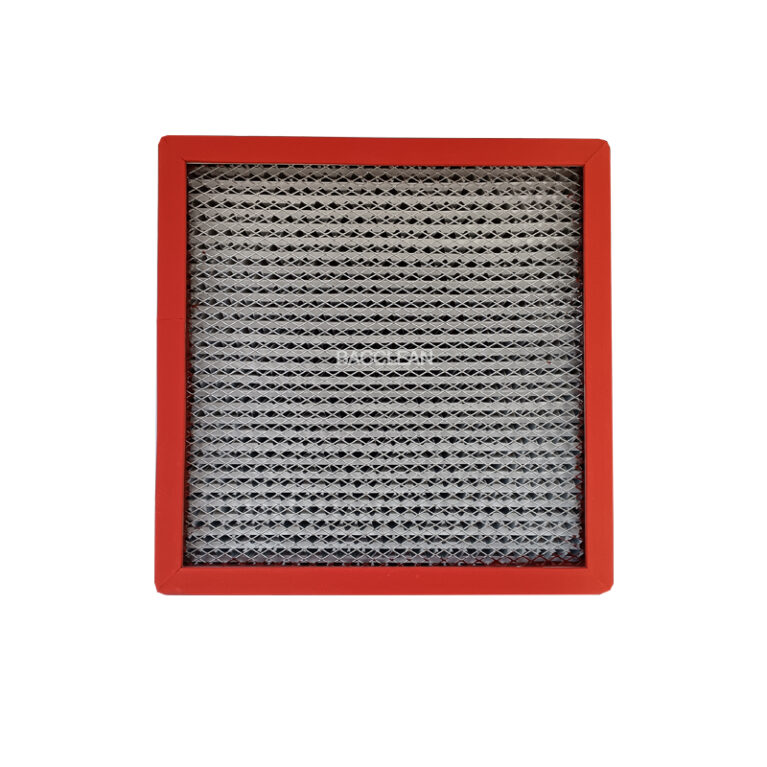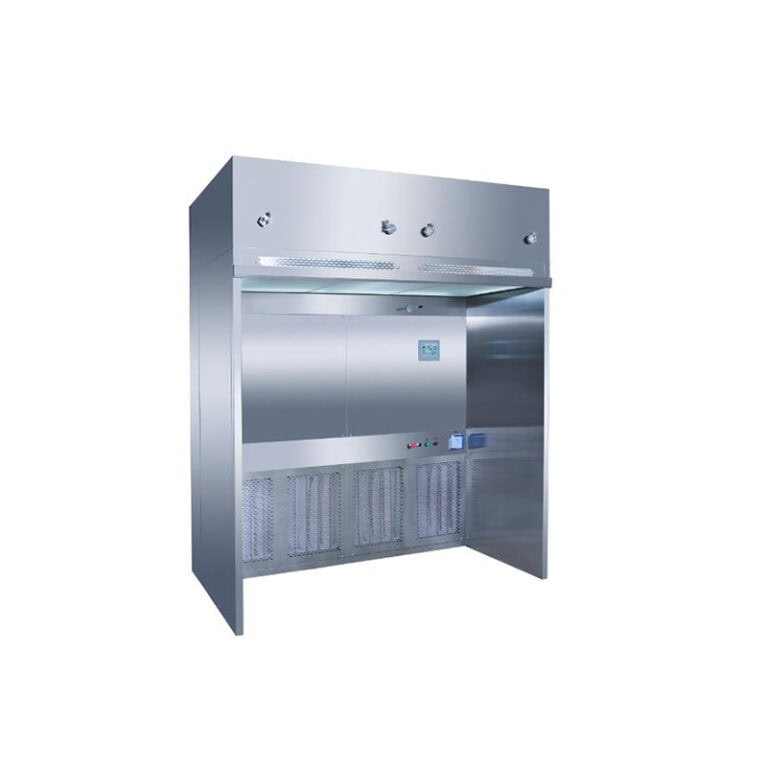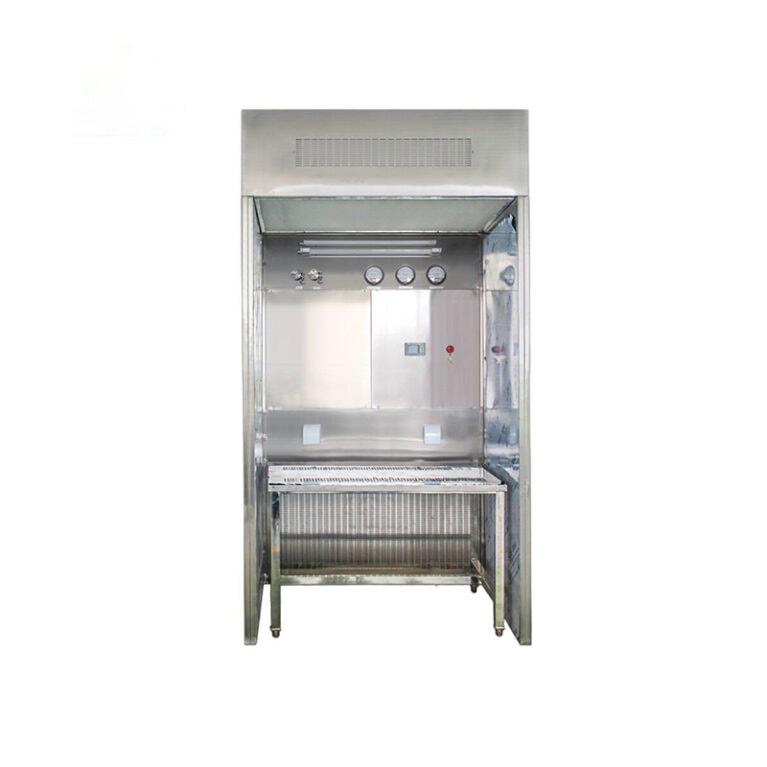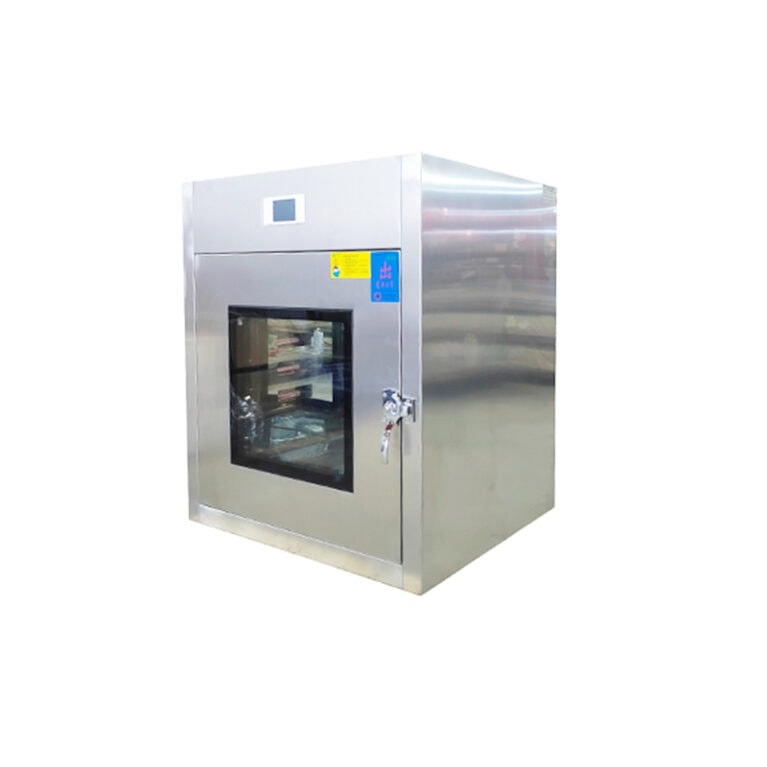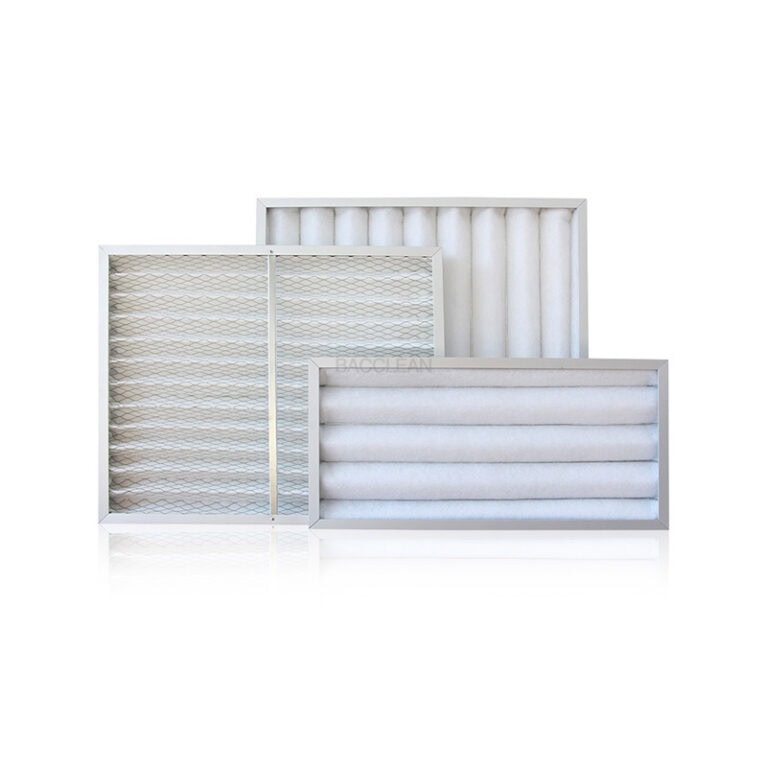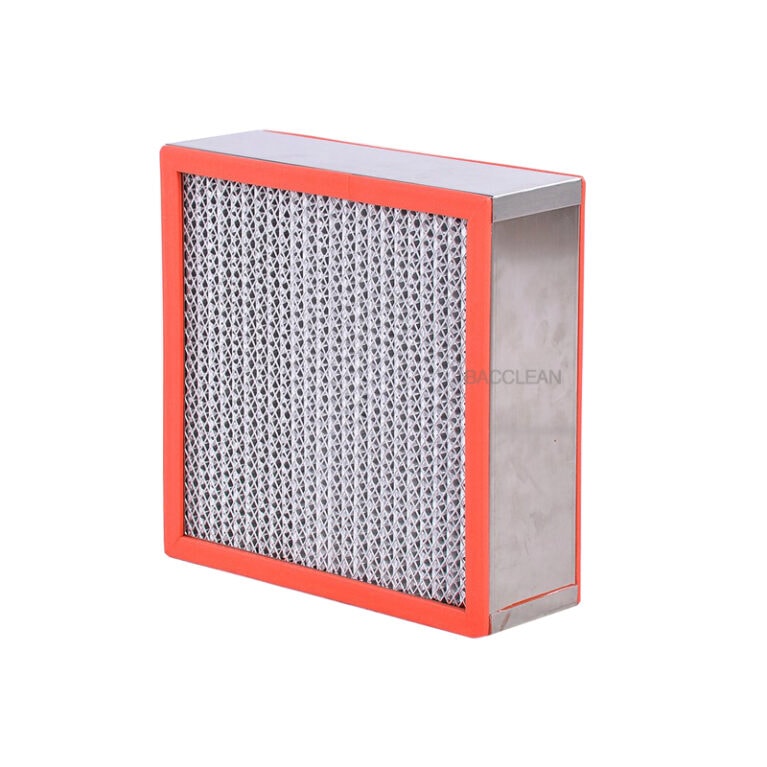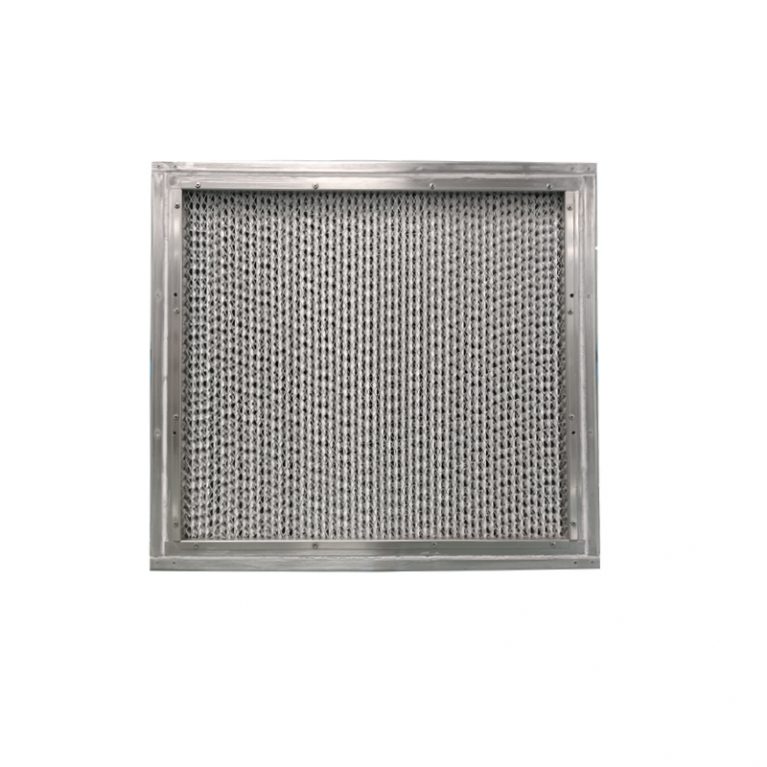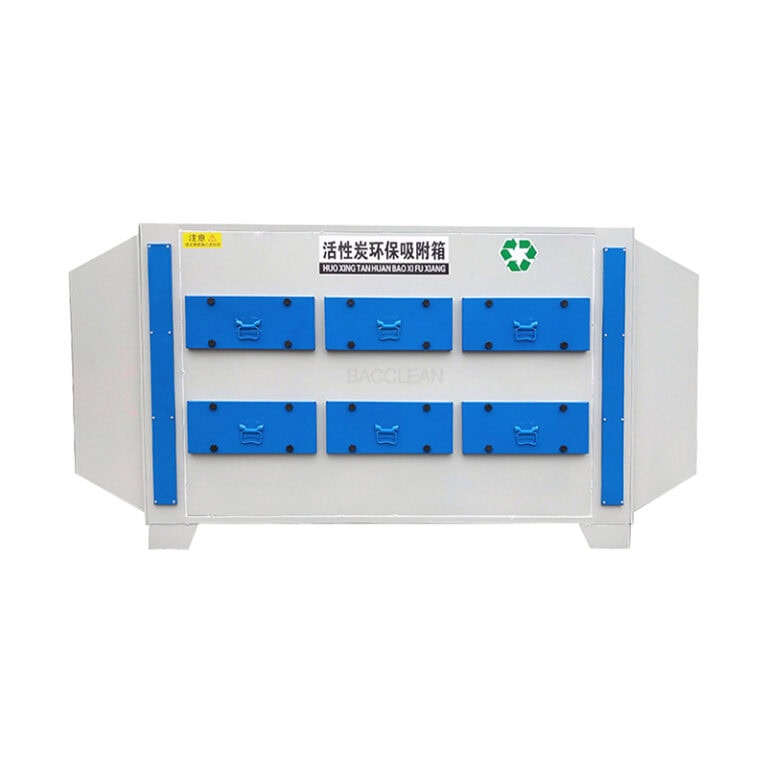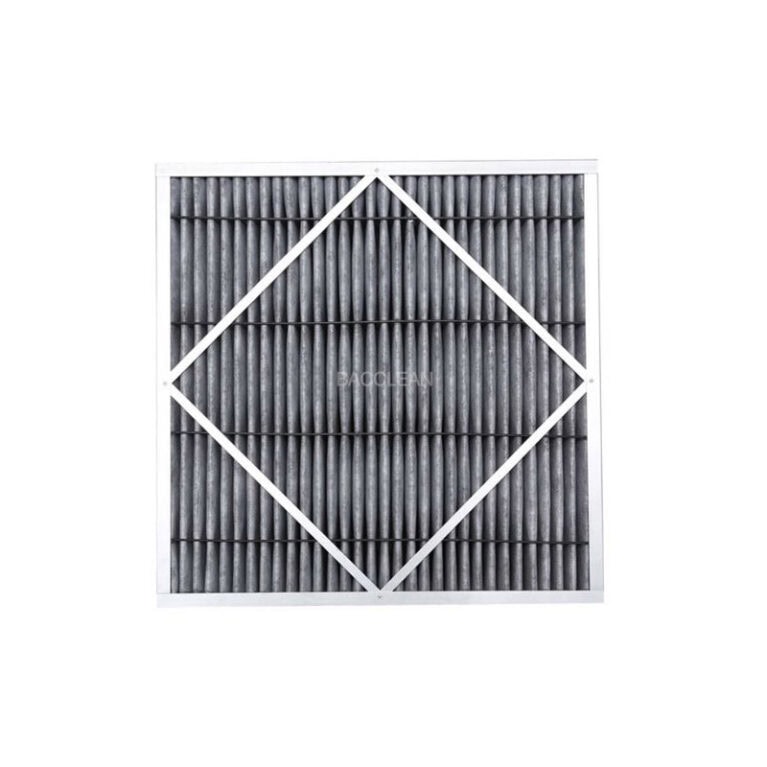Le choix de l'unité de filtration par ventilateur (FFU) affecte directement l'effet de purification, le coût d'exploitation et la stabilité de la salle blanche, et doit faire l'objet d'une évaluation complète en combinaison avec des scénarios d'application spécifiques. Les facteurs clés suivants doivent être pris en compte en priorité lors de la sélection :
I. Exigences en matière de propreté
C'est la base principale de la sélection, qui détermine le type et les paramètres de performance du filtre :
Taille des particules et efficacité de la filtration
Si une salle blanche de classe 1000 à 100 000 est nécessaire (comme pour l'assemblage électronique général et la transformation des aliments), un filtre HEPA (avec une efficacité de ≥99,97% pour des particules de 0,3μm) est suffisant.
Si la classe 1 à 100 est requise (comme dans la fabrication de plaquettes de semi-conducteurs, les ateliers aseptiques de biomédecine), il convient de choisir des filtres ULPA (avec une efficacité de ≥99,999% pour des particules de 0,12μm).
Normes de qualité de l'air : Il est nécessaire de se référer à des normes telles que ISO 14644-1 et FS 209E, de définir clairement la concentration maximale admissible de particules dans la zone cible, puis d'inverser les exigences d'efficacité de filtration de l'UFA.
Ii. Volume d'air et taux de renouvellement de l'air
Le volume d'air est le principal paramètre de performance de la FFU et doit correspondre aux exigences de volume et de taux de renouvellement d'air de la salle blanche.
Calcul du taux de renouvellement d'air Le taux de renouvellement d'air minimum est déterminé en fonction du niveau de propreté (par exemple, ≥300 fois /h pour la classe 100 et ≥150 fois /h pour la classe 10 000), puis le volume d'air total requis est calculé à l'aide de la formule "Volume d'air = volume de la pièce × taux de renouvellement d'air", et le volume d'air et la quantité d'installation de chaque FFU sont déterminés en conséquence.
Plage de réglage du volume d'air : Dans certains cas (tels que le démarrage et l'arrêt de l'équipement, les changements de personnel), un réglage dynamique du volume d'air est nécessaire. Il est préférable de choisir des unités de ventilation à régulation progressive de la vitesse (comme les modèles de ventilateurs à courant continu sans balais) pour s'assurer que le volume d'air peut être ajusté dans une plage de 30% à 100%, en tenant compte à la fois de l'économie d'énergie et de la stabilité de l'état de propreté.
Iii. Types de ventilateurs et consommation d'énergie
Le ventilateur est le principal élément consommateur d'énergie de l'unité de traitement de l'air, et son type a une incidence directe sur le coût d'exploitation.
Les ventilateurs centrifuges : Ils se caractérisent par une pression d'air élevée et un volume d'air stable, ce qui les rend adaptés aux grandes salles blanches ou aux scénarios dans lesquels une résistance élevée du système doit être surmontée (comme de longs conduits d'air et des filtres multiples). Cependant, ils ont une consommation d'énergie modérée et des niveaux de bruit légèrement plus élevés (environ 55 à 65 dB).
Ventilateurs axiaux : Ils ont un grand volume d'air mais une faible pression d'air, ce qui les rend adaptés aux salles blanches simples à faible résistance. Ils ont une consommation d'énergie relativement faible et sont peu bruyants (environ 50 à 60 dB), mais la stabilité de leur volume d'air est médiocre et leur efficacité de filtration est fortement influencée par l'environnement.
Ventilateurs à courant continu sans balais : Ils se caractérisent par un rendement élevé et des économies d'énergie (30% à 50% plus économes en énergie que les ventilateurs CA traditionnels), une longue durée de vie (≥ 50 000 heures), une grande précision de régulation de la vitesse et un faible niveau de bruit (environ 50 à 60dB). Ils constituent le choix privilégié pour les salles blanches haut de gamme (comme dans les industries des semi-conducteurs et des produits pharmaceutiques). Bien que leur coût initial soit relativement élevé, ils offrent un meilleur rapport coût/performance à long terme.
Iv. environnement d'installation et dimensions
La taille et la méthode d'installation du FFU doivent correspondre à l'agencement de la salle blanche.
Dimensions extérieures : Les dimensions standardisées courantes sont 1200×600 mm, 1200×1200 mm, 600×600 mm, etc. Elles doivent correspondre à l'espacement de la quille du plafond (par exemple une grille de 600×600 mm) ou du cadre d'installation afin d'éviter les difficultés d'installation ou les fuites d'air causées par une inadéquation des dimensions.
Méthode d'installation
Montage au plafond : Adapté aux salles blanches normalisées, il est nécessaire de s'assurer de la capacité de charge du plafond (le poids d'un seul FFU est d'environ 20 à 40 kilogrammes).
Type de support : Adapté aux zones non standardisées ou aux rénovations temporaires, la capacité de charge et la stabilité des supports doivent être prises en compte.
Combinaison à flux laminaire : Plusieurs FFU sont assemblés pour former une hotte à flux laminaire. Il est nécessaire de s'assurer que les points de jonction sont bien scellés pour éviter les courts-circuits dans le flux d'air.
Limitation de la hauteur de l'espace : La hauteur du FFU lui-même (environ 300 à 500 mm) doit correspondre à la hauteur libre entre le plafond et le sol afin de ne pas gêner le fonctionnement du personnel ou de l'équipement.
V. Mode de contrôle et exigences en matière d'intelligence
Sélectionnez le mode de contrôle en fonction de l'échelle de la salle blanche et des exigences de gestion :
Commande manuelle unique : Convient aux petites salles blanches (telles que les laboratoires), avec un faible coût. La vitesse du vent de chaque FFU peut être réglée indépendamment à l'aide d'un bouton, mais ce système n'est pas pratique pour une gestion centralisée et sa consommation d'énergie est relativement élevée.
Contrôle centralisé : Plusieurs FFU peuvent être gérées uniformément par l'intermédiaire d'un PLC, d'un écran tactile ou d'un système de contrôle central, ce qui permet de surveiller en temps réel la vitesse du vent, la pression du vent et l'état des pannes. Il permet le démarrage, l'arrêt et la régulation de la vitesse par lots, ce qui le rend adapté aux grandes salles blanches (telles que les usines électroniques) et facilite les économies d'énergie et la maintenance.
Contrôle intelligent de l'interverrouillage : En intégrant des dispositifs tels que des capteurs de pression différentielle et des compteurs de particules, il est possible de procéder à un réglage automatique (par exemple, augmenter automatiquement le volume d'air lorsque la propreté diminue) et de le connecter au système MES de l'usine. Il convient à des scénarios où les exigences en matière de stabilité de la propreté sont extrêmement élevées (comme dans les zones de lithographie des semi-conducteurs). L'investissement initial est élevé, mais il permet de réduire considérablement les coûts de main-d'œuvre.
Vi. Bruit et vibrations
Les opérateurs de salles blanches restent à l'intérieur pendant de longues périodes et ont besoin de contrôler le bruit et les vibrations de la FFU.
Exigences en matière de bruit : Pour les salles blanches générales, le niveau de bruit doit être ≤65dB (pour les ateliers de précision, il doit être ≤60dB). Lors du choix du modèle, il convient de privilégier les ventilateurs peu bruyants (tels que les ventilateurs à courant continu sans balais) et de vérifier si l'équipement est équipé de tampons amortisseurs et de structures de réduction du bruit afin d'éviter l'amplification du bruit due à la transmission des vibrations.
Contrôle des vibrations : Les vibrations générées par le ventilateur pendant son fonctionnement peuvent affecter les équipements de précision (tels que les machines de photolithographie). Il est nécessaire de sélectionner un ventilateur avec une grande précision d'équilibrage dynamique ou d'utiliser des supports absorbant les chocs pour réduire la transmission des vibrations.
Vii. Entretien et durée de vie
Les coûts d'utilisation à long terme et la facilité d'entretien doivent être pris en compte à l'avance.
Remplacement du filtre : La durée de vie des filtres HEPA/ULPA est généralement de 1 à 3 ans (en fonction de la concentration de poussière dans l'environnement). Lors de la sélection du type de filtre, il est nécessaire de s'assurer que le remplacement du filtre est pratique (ouverture latérale ou structure à tiroir) afin d'éviter un démontage complexe susceptible d'entraîner des temps d'arrêt excessifs.
La durée de vie du ventilateur : La durée de vie d'un ventilateur à courant continu sans balais peut atteindre plus de 50 000 heures, tandis que celle d'un ventilateur à courant alternatif est d'environ 20 000 à 30 000 heures. La sélection doit être basée sur le cycle d'amortissement de l'équipement afin de réduire la fréquence de remplacement à un stade ultérieur.
Approvisionnement en pièces vulnérables : Choisir des marques ayant une grande part de marché pour assurer un approvisionnement adéquat en pièces vulnérables telles que les ventilateurs, les moteurs et les filtres, réduisant ainsi le temps d'attente pour l'entretien.
Viii. Budgétisation des coûts
Il est nécessaire de trouver un équilibre entre le coût d'acquisition initial et le coût d'exploitation à long terme
Pour les scénarios bas de gamme (tels que les zones de nettoyage temporaires), il est possible d'opter pour un système HEPA + un ventilateur centrifuge à courant alternatif + un contrôle manuel. Le coût est relativement faible, mais la consommation d'énergie est élevée.
Pour les scénarios haut de gamme (tels que les ateliers de semi-conducteurs), il est recommandé de choisir l'ULPA + le ventilateur CC sans balais + le contrôle intelligent. L'investissement initial est élevé, mais les performances en matière d'économie d'énergie sont bonnes, la durée de vie est longue et le coût total à long terme est plus faible.
En conclusion, le choix d'une UFA doit être basé sur les exigences de propreté, et une décision globale doit être prise en tenant compte de facteurs tels que le volume d'air, la consommation d'énergie, l'environnement de l'installation et les exigences intelligentes. Si nécessaire, la rationalité de la sélection peut être vérifiée par des essais sur site ou des calculs de simulation.
I. Exigences en matière de propreté
C'est la base principale de la sélection, qui détermine le type et les paramètres de performance du filtre :
Taille des particules et efficacité de la filtration
Si une salle blanche de classe 1000 à 100 000 est nécessaire (comme pour l'assemblage électronique général et la transformation des aliments), un filtre HEPA (avec une efficacité de ≥99,97% pour des particules de 0,3μm) est suffisant.
Si la classe 1 à 100 est requise (comme dans la fabrication de plaquettes de semi-conducteurs, les ateliers aseptiques de biomédecine), il convient de choisir des filtres ULPA (avec une efficacité de ≥99,999% pour des particules de 0,12μm).
Normes de qualité de l'air : Il est nécessaire de se référer à des normes telles que ISO 14644-1 et FS 209E, de définir clairement la concentration maximale admissible de particules dans la zone cible, puis d'inverser les exigences d'efficacité de filtration de l'UFA.
Ii. Volume d'air et taux de renouvellement de l'air
Le volume d'air est le principal paramètre de performance de la FFU et doit correspondre aux exigences de volume et de taux de renouvellement d'air de la salle blanche.
Calcul du taux de renouvellement d'air Le taux de renouvellement d'air minimum est déterminé en fonction du niveau de propreté (par exemple, ≥300 fois /h pour la classe 100 et ≥150 fois /h pour la classe 10 000), puis le volume d'air total requis est calculé à l'aide de la formule "Volume d'air = volume de la pièce × taux de renouvellement d'air", et le volume d'air et la quantité d'installation de chaque FFU sont déterminés en conséquence.
Plage de réglage du volume d'air : Dans certains cas (tels que le démarrage et l'arrêt de l'équipement, les changements de personnel), un réglage dynamique du volume d'air est nécessaire. Il est préférable de choisir des unités de ventilation à régulation progressive de la vitesse (comme les modèles de ventilateurs à courant continu sans balais) pour s'assurer que le volume d'air peut être ajusté dans une plage de 30% à 100%, en tenant compte à la fois de l'économie d'énergie et de la stabilité de l'état de propreté.
Iii. Types de ventilateurs et consommation d'énergie
Le ventilateur est le principal élément consommateur d'énergie de l'unité de traitement de l'air, et son type a une incidence directe sur le coût d'exploitation.
Les ventilateurs centrifuges : Ils se caractérisent par une pression d'air élevée et un volume d'air stable, ce qui les rend adaptés aux grandes salles blanches ou aux scénarios dans lesquels une résistance élevée du système doit être surmontée (comme de longs conduits d'air et des filtres multiples). Cependant, ils ont une consommation d'énergie modérée et des niveaux de bruit légèrement plus élevés (environ 55 à 65 dB).
Ventilateurs axiaux : Ils ont un grand volume d'air mais une faible pression d'air, ce qui les rend adaptés aux salles blanches simples à faible résistance. Ils ont une consommation d'énergie relativement faible et sont peu bruyants (environ 50 à 60 dB), mais la stabilité de leur volume d'air est médiocre et leur efficacité de filtration est fortement influencée par l'environnement.
Ventilateurs à courant continu sans balais : Ils se caractérisent par un rendement élevé et des économies d'énergie (30% à 50% plus économes en énergie que les ventilateurs CA traditionnels), une longue durée de vie (≥ 50 000 heures), une grande précision de régulation de la vitesse et un faible niveau de bruit (environ 50 à 60dB). Ils constituent le choix privilégié pour les salles blanches haut de gamme (comme dans les industries des semi-conducteurs et des produits pharmaceutiques). Bien que leur coût initial soit relativement élevé, ils offrent un meilleur rapport coût/performance à long terme.
Iv. environnement d'installation et dimensions
La taille et la méthode d'installation du FFU doivent correspondre à l'agencement de la salle blanche.
Dimensions extérieures : Les dimensions standardisées courantes sont 1200×600 mm, 1200×1200 mm, 600×600 mm, etc. Elles doivent correspondre à l'espacement de la quille du plafond (par exemple une grille de 600×600 mm) ou du cadre d'installation afin d'éviter les difficultés d'installation ou les fuites d'air causées par une inadéquation des dimensions.
Méthode d'installation
Montage au plafond : Adapté aux salles blanches normalisées, il est nécessaire de s'assurer de la capacité de charge du plafond (le poids d'un seul FFU est d'environ 20 à 40 kilogrammes).
Type de support : Adapté aux zones non standardisées ou aux rénovations temporaires, la capacité de charge et la stabilité des supports doivent être prises en compte.
Combinaison à flux laminaire : Plusieurs FFU sont assemblés pour former une hotte à flux laminaire. Il est nécessaire de s'assurer que les points de jonction sont bien scellés pour éviter les courts-circuits dans le flux d'air.
Limitation de la hauteur de l'espace : La hauteur du FFU lui-même (environ 300 à 500 mm) doit correspondre à la hauteur libre entre le plafond et le sol afin de ne pas gêner le fonctionnement du personnel ou de l'équipement.
V. Mode de contrôle et exigences en matière d'intelligence
Sélectionnez le mode de contrôle en fonction de l'échelle de la salle blanche et des exigences de gestion :
Commande manuelle unique : Convient aux petites salles blanches (telles que les laboratoires), avec un faible coût. La vitesse du vent de chaque FFU peut être réglée indépendamment à l'aide d'un bouton, mais ce système n'est pas pratique pour une gestion centralisée et sa consommation d'énergie est relativement élevée.
Contrôle centralisé : Plusieurs FFU peuvent être gérées uniformément par l'intermédiaire d'un PLC, d'un écran tactile ou d'un système de contrôle central, ce qui permet de surveiller en temps réel la vitesse du vent, la pression du vent et l'état des pannes. Il permet le démarrage, l'arrêt et la régulation de la vitesse par lots, ce qui le rend adapté aux grandes salles blanches (telles que les usines électroniques) et facilite les économies d'énergie et la maintenance.
Contrôle intelligent de l'interverrouillage : En intégrant des dispositifs tels que des capteurs de pression différentielle et des compteurs de particules, il est possible de procéder à un réglage automatique (par exemple, augmenter automatiquement le volume d'air lorsque la propreté diminue) et de le connecter au système MES de l'usine. Il convient à des scénarios où les exigences en matière de stabilité de la propreté sont extrêmement élevées (comme dans les zones de lithographie des semi-conducteurs). L'investissement initial est élevé, mais il permet de réduire considérablement les coûts de main-d'œuvre.
Vi. Bruit et vibrations
Les opérateurs de salles blanches restent à l'intérieur pendant de longues périodes et ont besoin de contrôler le bruit et les vibrations de la FFU.
Exigences en matière de bruit : Pour les salles blanches générales, le niveau de bruit doit être ≤65dB (pour les ateliers de précision, il doit être ≤60dB). Lors du choix du modèle, il convient de privilégier les ventilateurs peu bruyants (tels que les ventilateurs à courant continu sans balais) et de vérifier si l'équipement est équipé de tampons amortisseurs et de structures de réduction du bruit afin d'éviter l'amplification du bruit due à la transmission des vibrations.
Contrôle des vibrations : Les vibrations générées par le ventilateur pendant son fonctionnement peuvent affecter les équipements de précision (tels que les machines de photolithographie). Il est nécessaire de sélectionner un ventilateur avec une grande précision d'équilibrage dynamique ou d'utiliser des supports absorbant les chocs pour réduire la transmission des vibrations.
Vii. Entretien et durée de vie
Les coûts d'utilisation à long terme et la facilité d'entretien doivent être pris en compte à l'avance.
Remplacement du filtre : La durée de vie des filtres HEPA/ULPA est généralement de 1 à 3 ans (en fonction de la concentration de poussière dans l'environnement). Lors de la sélection du type de filtre, il est nécessaire de s'assurer que le remplacement du filtre est pratique (ouverture latérale ou structure à tiroir) afin d'éviter un démontage complexe susceptible d'entraîner des temps d'arrêt excessifs.
La durée de vie du ventilateur : La durée de vie d'un ventilateur à courant continu sans balais peut atteindre plus de 50 000 heures, tandis que celle d'un ventilateur à courant alternatif est d'environ 20 000 à 30 000 heures. La sélection doit être basée sur le cycle d'amortissement de l'équipement afin de réduire la fréquence de remplacement à un stade ultérieur.
Approvisionnement en pièces vulnérables : Choisir des marques ayant une grande part de marché pour assurer un approvisionnement adéquat en pièces vulnérables telles que les ventilateurs, les moteurs et les filtres, réduisant ainsi le temps d'attente pour l'entretien.
Viii. Budgétisation des coûts
Il est nécessaire de trouver un équilibre entre le coût d'acquisition initial et le coût d'exploitation à long terme
Pour les scénarios bas de gamme (tels que les zones de nettoyage temporaires), il est possible d'opter pour un système HEPA + un ventilateur centrifuge à courant alternatif + un contrôle manuel. Le coût est relativement faible, mais la consommation d'énergie est élevée.
Pour les scénarios haut de gamme (tels que les ateliers de semi-conducteurs), il est recommandé de choisir l'ULPA + le ventilateur CC sans balais + le contrôle intelligent. L'investissement initial est élevé, mais les performances en matière d'économie d'énergie sont bonnes, la durée de vie est longue et le coût total à long terme est plus faible.
En conclusion, le choix d'une UFA doit être basé sur les exigences de propreté, et une décision globale doit être prise en tenant compte de facteurs tels que le volume d'air, la consommation d'énergie, l'environnement de l'installation et les exigences intelligentes. Si nécessaire, la rationalité de la sélection peut être vérifiée par des essais sur site ou des calculs de simulation.

